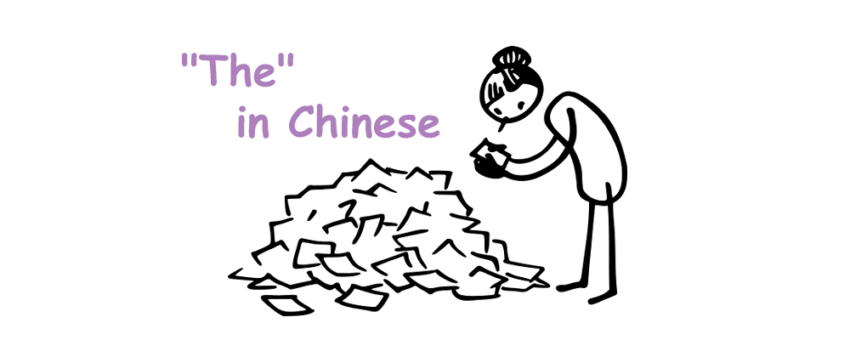The word “the” is used frequently in English, and you may wonder how to translate it into Chinese. However, there is no direct equivalent for “the” in Chinese.
One common usage of “the” in English is to refer to specific nouns. In Chinese, there are three ways to express this concept.
Using Topic-comment Structure
In linguistics, the topic of a sentence refers to what is being discussed, while the comment is what is being said about the topic. When using the topic-comment structure in Chinese, it’s common to place the object at the beginning of the sentence instead of following the SVO structure.
書在哪裡?书在哪里?
Where is the book? (in specific)
Both listener and speaker know which book they are talking about.
哪裡有書?哪里有书?
Where can I find books?(in general)
狗我洗了!狗我洗了!
I have washed the dog. (in specific)
(Even if you have 2 dogs, the listener knows exactly which dog you are talking about)
我洗狗了!我洗狗了!
Wǒ xǐgǒule!
I have washed a dog or dogs. (in general)
(If you have 2 dogs, the listener may ask you which dog, or, did you wash both of them?)
Let’s compare them
Q: 咖啡你買了嗎?咖啡你买了吗?
Have you bought the coffee?
A: 咖啡我還沒買咖啡我还没买
I haven’t bought the coffee. (in specific)
Q: 你買完了嗎?你买完了吗?
Did you finish shopping?
A: 我還沒買咖啡我还没买咖啡
I haven’t bought coffee. (in general)
Using Demonstrative Pronouns
Demonstrative pronouns are a type of pronoun that are used to point to or identify a specific person, place, thing, or idea. They are used to replace a noun or noun phrase, and to indicate its location in relation to the speaker or the listener.
Examples of demonstrative pronouns include “this,” “that,” “these,” and “those.” “This” and “these” are used to refer to things that are near the speaker, while “that” and “those” are used to refer to things that are farther away from the speaker. In Chinese are 这 zhè (this) and 那 nà (that)
這個蛋糕很好吃这个蛋糕很好吃
This cake really tastes good. (in specific)
蛋糕很好吃蛋糕很好吃
Cakes really taste good. (in general)
那些人是誰?那些人是谁?
Who are those people?
那中文(字)很難寫那中文(字)很难写
That Chinese (character) is hard to write. (in specific)
中文很難寫中文很难写
Chinese is hard to write. (in general)
Using Clear Descriptions
你喜歡吃媽媽做的飯嗎?你喜欢吃妈妈做的饭吗?
Do you like to eat the food your mom made?
我們昨天去的餐廳很貴我们昨天去的餐厅很贵
The restaurant we went to yesterday was expensive.
他弄壞了你新買的電視機他弄坏了你新买的电视机
He broke the TV you just bought.


